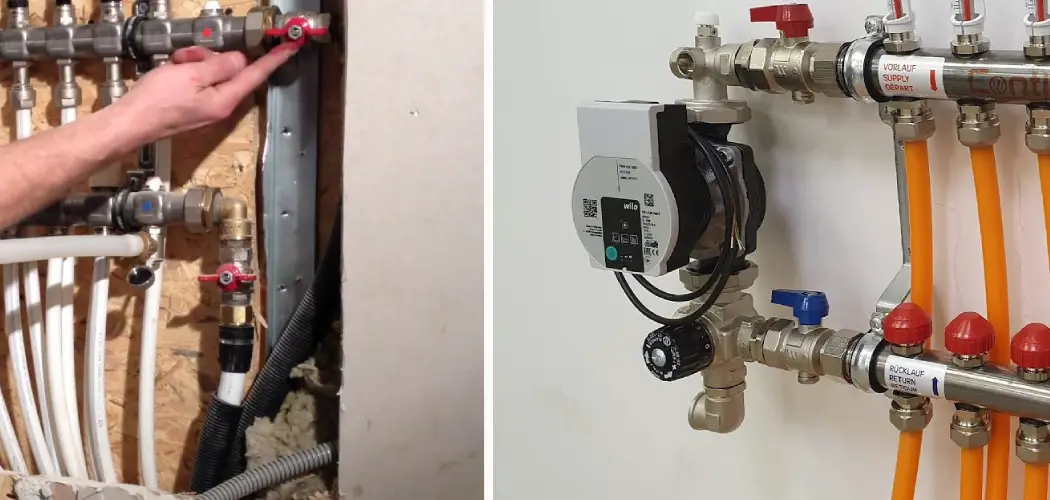If you’re a homeowner or someone responsible for maintaining a heating system, then you’ve come to the right place. In this blog post, we’re going to dive deep into the world of radiant heat systems and how to bleed them. Now, you might be wondering what exactly a radiant heat system is, and why it’s important to know how to bleed it. Don’t worry, we’ll cover all of that and more.
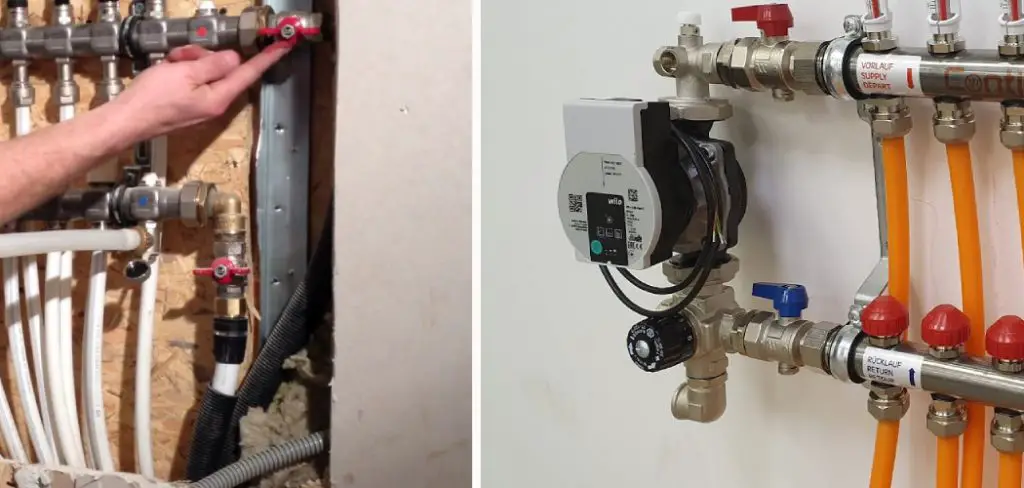
Whether you’re a DIY enthusiast or just looking to expand your knowledge, this post will provide you with step-by-step instructions on how to bleed radiant heat system, tips, and tricks to ensure your radiant heat system is working efficiently and effectively. So, grab a cup of coffee, get comfortable, and let’s jump right into the fantastic world of radiant heat systems!
Why May You Want to Bleed Radiant Heat System?
1 . To Remove Air Bubbles
Radiant heat systems are designed to circulate hot water or steam through pipes in your floor, ceiling or walls. Over time, air bubbles can become trapped in the system, which can prevent the proper flow of the heated liquid. This can cause cold spots and uneven heating throughout your home. Bleeding your radiant heat system removes these air bubbles and ensures that the heat can evenly distributed throughout your space.
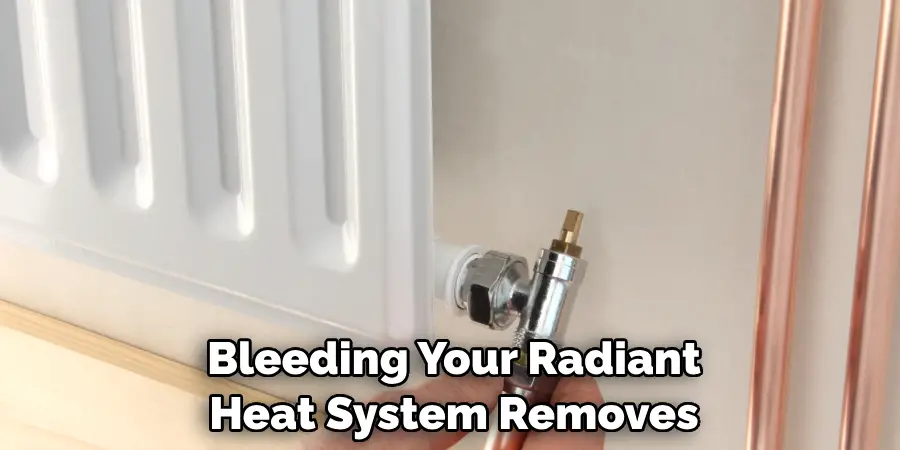
2. To Improve Efficiency
Air bubbles can also cause your radiant heat system to run less efficiently, as they create pockets of air within the pipes which insulate against the hot water or steam. This means that it takes longer for the heated liquid to reach its intended destination and can result in higher energy bills. Bleeding your system will remove these air pockets and allow for a more efficient circulation of heat.
3. To Prevent Corrosion
When air bubbles are present in your radiant heat system, they can cause areas of the pipes to become oxygenated. This can lead to corrosion over time, which can weaken the pipes and potentially cause leaks or other damage. Regularly bleeding your system can help prevent this corrosion and prolong the lifespan of your heating system.
4. To Reduce Noise
If you hear strange noises coming from your radiant heat system, such as gurgling or knocking sounds, it could be a sign that there is air trapped in the pipes. Bleeding the system will remove these air bubbles and reduce the noise levels, making for a quieter and more comfortable living environment.
How to Bleed Radiant Heat System in 5 Easy Steps
Step 1: Gather the Necessary Tools and Materials
Before you begin bleeding your radiant heat system, make sure you have all the necessary tools and materials at hand. This includes a flathead screwdriver, a bucket or towel to catch any water spills, a pair of pliers (if needed), and radiator key (if applicable). It’s important to have everything ready before you start the process to avoid any potential accidents or delays.
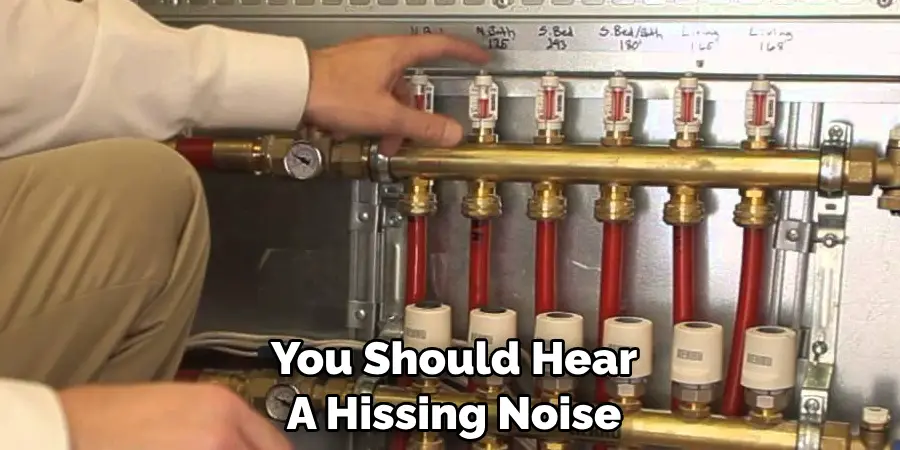
Step 2: Locate the Bleeder Valve
Next, locate the bleeder valve on your radiant heat system. This will typically be located at the top of the radiator or at the end of a loop in your piping system. If you’re unsure where to find it, refer to your system’s manual or consult a professional.
Step 3: Turn Off the Heat
Before beginning the bleeding process, it’s important to turn off the heat in your home. This will allow the water in your system to cool down and reduce the risk of burns or scalding.
Step 4: Open the Bleeder Valve
Using your screwdriver or radiator key, carefully open the bleeder valve on your radiant heat system. You should hear a hissing noise as any trapped air is released from the system. Keep the valve open until water starts to come out consistently.
Step 5: Close the Bleeder Valve
Once water starts to flow through the bleeder valve, close it back up using your screwdriver or radiator key. It’s important to do this step quickly to avoid losing too much water from your system.
Congratulations, you have successfully bled your radiant heat system! Remember to check the pressure gauge on your boiler after bleeding to ensure it is at the proper level. If not, you may need to add more water to the system using the fill valve.
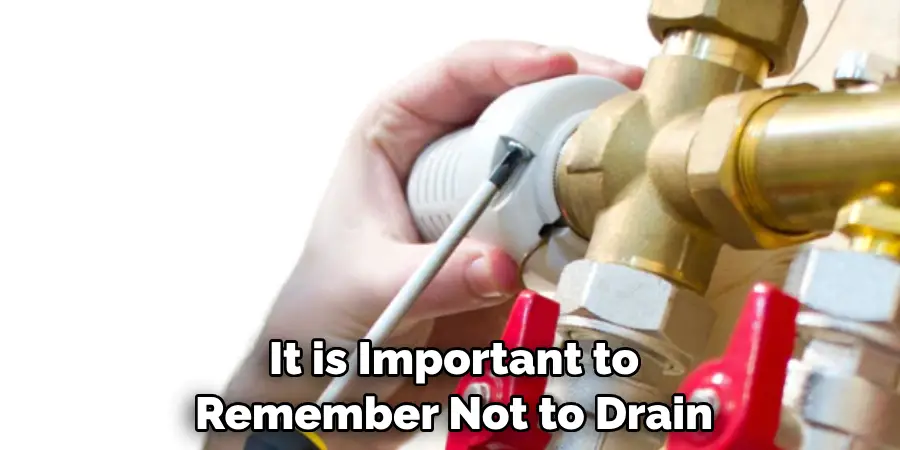
Some Extra Tips to Bleed Radiant Heat System
1 . Do Not Drain the Whole System
When bleeding a radiant heat system, it is important to remember not to drain the entire system. Only a small amount of water should be drained at any given time. This ensures that the pressure in the system remains stable and there is no risk of air being introduced into the pipes.
2 . Check for Air Leaks
If you have followed all the steps and are still experiencing issues with your radiant heat system, it is possible that there may be air leaks in the pipes. This can happen due to wear and tear or improper installation. Make sure to check for any visible cracks or gaps in the pipes and seal them properly to prevent further air from entering the system.
3 . Regular Maintenance is Key
To avoid having to bleed your radiant heat system frequently, it is important to perform regular maintenance on the system. This includes checking for any leaks, replacing worn-out parts, and ensuring proper water levels. By staying on top of maintenance, you can prevent air from entering the system and keep it running smoothly.
4 . Use a Professional if Needed
In some cases, bleeding a radiant heat system may require professional assistance. If you are unsure about the process or encounter any issues while attempting to bleed the system, it is best to consult a professional. They will have the necessary expertise and equipment to properly bleed your system and prevent any potential damage.
5 . Keep an Eye on Your Pressure Gauge
To ensure that your radiant heat system is functioning properly, make sure to keep an eye on the pressure gauge. If you notice a significant decrease in pressure, it could indicate that there is air in the system and it needs to be bled. Regularly checking the pressure gauge can help you catch any issues early on and prevent larger problems from occurring.
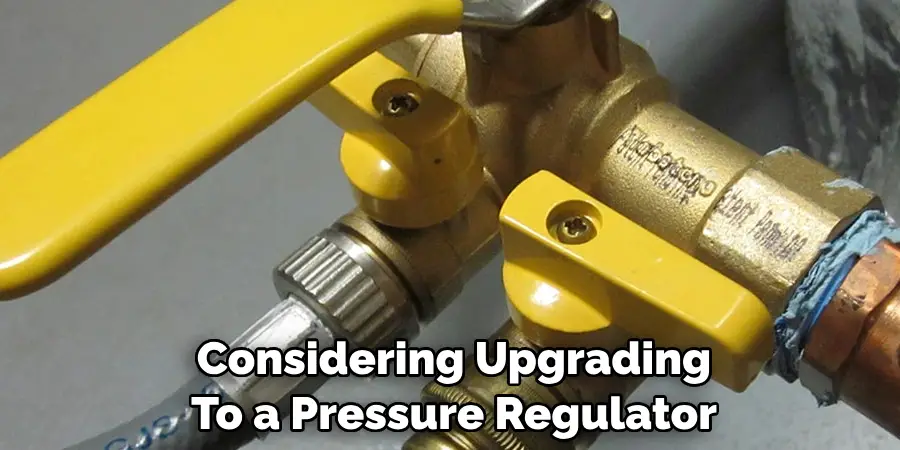
6 . Consider Upgrading to a Pressure Regulator
If you find that your radiant heat system is constantly experiencing issues with air in the pipes, it may be worth considering upgrading to a pressure regulator. This device helps regulate and maintain proper pressure levels in the system, reducing the chances of air being introduced into the pipes. Consult with a professional to determine if a pressure regulator would be beneficial for your system.
Frequently Asked Questions
What Precautions Should I Take Before Bleeding My Radiant Heat System?
Before bleeding your radiant heat system, it is important to take the necessary precautions to ensure a safe and effective process. Here are some key steps to follow:
- Make sure your heating system is turned off: It is important to turn off your heating system before bleeding it. This will prevent any hot water or steam from spraying out and causing injury.
- Prepare the right tools: You will need a radiator key, bowl or bucket to collect water, and a towel or cloth to clean up any spills.
- Let the system cool down: It is important to let your heating system cool down before bleeding it. This will prevent any burns from hot components.
How Do I Know When My Radiant Heat System Needs Bleeding?
You may notice your radiant heat system is not functioning properly, such as uneven heating or strange noises. This could be a sign that air has accumulated in the system and needs to be released through bleeding.
Can I Bleed My Radiant Heat System On My Own?
While it is possible to bleed your radiant heat system on your own, it is recommended to hire a professional HVAC technician for the job. They have the necessary skills and experience to safely and effectively bleed your system.
How Often Should I Bleed My Radiant Heat System?
It is generally recommended to bleed your radiant heat system at least once a year. However, if you notice any issues with your heating system, such as uneven heating or strange noises, it may need to be bled more frequently.
What Happens If I Don’t Bleed My Radiant Heat System?
If air is allowed to accumulate in your radiant heat system without being released through bleeding, it can cause various issues. These include reduced efficiency, uneven heating, and potential damage to your system.
Conclusion
To conclude, properly bleeding a radiant heating system does not need to be an intimidating task if you know what you’re doing. With the right tools and knowledge, you can easily bleed your heating system yourself or hire a professional to ensure that it is done safely. Whether you choose to do it on your own or employ someone else for the job, make sure that you take all necessary precautionary measures to maintain maximum safety while performing the process.
Now you know how to bleed radiant heat system! Remember: in order to reap all of the documented benefits of a radiant heat system in your home, regular maintenance and diligent practices are key. Thanks for reading today—we hope this article has helped shed some light on the issue of bleeding radiators and we encourage our readers to try out these techniques as they work through their next project!

